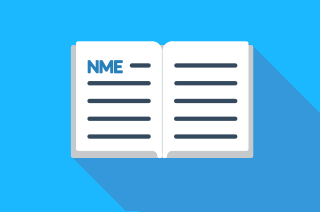This blog post is the first part of a series of three and aims to help understand the need for a neighbouring right for press publishers in the digital age.
Why a publishers’ right?
The news ecosystem has significantly changed in the last decade. Distribution of news has moved from paper format to digital platforms. Readers increasingly consume news online and expect access to content on a multitude of platforms 24/7.
The underlying process of creating and producing content however remains the same. News brands still invest in quality content, hire and train journalists, hold legal and editorial responsibility for the content they produce and publish.
News brands are facing a steady decline in print circulation. Between 2010 and 2014, news publishers’ total print revenues decreased by EUR 13.45 billion, while the digital revenues rose only by EUR 3.98 billion. This resulted in a net revenue loss of EUR 9.47 billion. As a result, publishing houses across the EU were forced to start cutting their editorial teams, this being especially the case of local and regional newspapers. This is a trend that is expected to continue, as it is proven to be difficult to monetize content online.
This downwards trend could unintentionally evolve into a situation that would bring permanent damage to the sector, the European citizens and, as an end result to European democracy.
A thriving, free and diverse press sector caters for the fundamental rights enshrined in Article 11 of the EU Charter of Fundamental Rights and Article 10 of the European Charter of Fundamental Rights ”Freedom of Expression and Information”. It will therefore be hard for the sector to be able to continue its mandate in the future, if the current situation does not change for the better.
European press-publishers do not have an exclusive right to protect the content they produce. This leads to severe issues when it comes to licensing their digital content. As a result, in the past decade, the press content has been massively reused by third parties without permission or remuneration and without press-publishers being able to do much about it.
In this context, on 14 September 2016, the European Commission published the Proposal for a Directive on Copyright in the Digital Single Market. In its proposal, the European Commission, in an attempt to adapt Copyright to the digital reality, enshrined, in Article 11, a neighbouring right for press publishers. There is complete consensus across News Media Europe’s membership and beyond, covering the European press market in almost its entirety, of the added value that such a measure would bring to the sector.
While this measure is by no means a silver bullet for the current situation, it would indisputably improve the press-publishers position in the Digital Single Market, offering them their own legal standing and therefore than improved negotiation position with third parties as intended by the European Commission.
What is a publishers’ right?
A publishers’ right is legally defined as “a related right” or a “neighbouring right” for press publishers, a right that “neighbours” the authors’ right in the works and other subject matter incorporated in a press-publication. This gives the holder of the related right its own legal standing becoming a right holder, with a right to receive revenues for the use, extraction or distribution of the subject-matter. In our case, this subject matter would be the press-publication and all elements incorporated in it.
A neighbouring right is something that broadcasters, movie producers and phonogram producers all currently enjoy. Therefore, the concept of a neighboring right is not new for the creative European industry and it seems to work well for them. As is the case with other neighbouring rights, the proposed right for press-publishers would also be naturally subjected to the exceptions and limitations applicable to the author’s rights. These exceptions are stipulated in the European and National legislations, taking into account the 3-step test and the Infosoc Directive. Some examples of such exemptions are quoting and illustration for teaching, scientific research and reproductions done by a natural persons for non-commercial private use.
What the right does is to confer protection from the massive scraping and re-use of press-content by information society service providers, that use, reproduce and make available online press content without permission or remuneration. It would protect press-publishers against established practices by information society service providers, that have, in the last decade, built up a multitude of services around the press-publishers’ content, without the latter being able to discuss the terms and conditions of the en-masse reuse of their content. It gives press-publishers their own legal standing in order for them to be able to negotiate with platforms and aggregators the terms and conditions on which their content is being distributed.
The neighbouring right gives publishers the opportunity to facilitate licensing of digital uses of their content in a fast and easy manner. Licensing could be carried out by publishing companies or by copyright organisations negotiating on behalf of press-publishers with third parties.
These mechanisms are already in place in Member States, and licensing copyright protected works is a well-functioning system.
While licensing methods come in many shapes and forms, two main methods prevail:
- Direct or individual licensing negotiated by the publishers would realistically be an option for the more heavy weight players in the market;
- Voluntary collective management that would require traditional collective management organisations to negotiate rates and terms of use, issue licenses to authorize uses, collecting and distributing royalties. By this type of licensing, publishers would entitle copyright organisations to license digital uses of their content on their behalf collectively. Therefore, rightholders would transfer to collecting
societies the rights to: sell non-exclusive licenses, collect royalties, distribute the collected royalties and enter into reciprocal agreements with other collecting societies. These types of organisations offer typically blanket licenses which allow the use of a broad range of content, providing convenience and value for money.
Furthermore, the right that we see on the European co-legislators’ table today and in the European Commission’s initial proposal is a waivable right. Rightholders can decide to enforce the right or not, but most importantly, they stay in control over their content, if they wish to do so.
News brands need the introduction of a clear, balanced and robust legal instrument that fosters legal clarity and harmonization across the European Market to protect their content online. Any further limitation to the sensible approaches of the European Parliament and the Council would render the right unenforceable and could unintentionally lead to the hampering of already existing licensing agreements in some Member States.
Therefore, for securing a thriving future for the European news brands in the EU and for the press to be able to serve its purpose to the best of its abilities, we hope we can count on your support for the introduction of a publishers’ right in the Proposal for Copyright in the Digital Single Market on the 20th of June.










